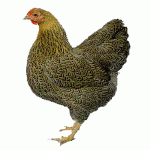Assignment summary: Create five different collages that demonstrate five distinctly different ways of bringing your cast objects together to create a finished work that is visually and intellectually compelling.
Please return to the research assignment that you completed at the start of this project and reflect on the particular type of ACCUMULATION that you set out to explore. Then, think about the best way to arrange the objects you’re casting in order to address this type of accumulation in a way that is also visually compelling. Be inventive, and consider incorporating found objects and/or building some additional elements to produce a more dynamic finished product. In sculptural projects, ideas are often developed slowly over time through a process of making, reflecting, making, experimenting, reflecting, making, experimenting, etc. This exercise is one final step of reflecting and experimenting that will help you create a stronger finished project.
While sketching is generally a good method of working through ideas, since you’re working with multiples in this project, it would take too much time to actually sketch out five detailed drawings of different solutions. However, on the computer you can easily create a number of images of whatever object(s) you’re molding, and then print these out. This is easy to do even with Microsoft Word by just cutting a pasting a small image over and over again. Then, by printing and then cutting these images out and arranging them in various configurations, you can quickly visualize some possible end products.
The playfulness and easy experimentation of the collage process is highly conducive to the consideration of various possibilities. Writing will always have a place in the clarification of ideas, but the collage approach is valuable because it is a visual method for working through a visual problem. Collaging will allow you to quickly and vividly SEE what your end product will be, and I think you’ll find it quite useful.
Feel free to simply bring hard copies of your collages, or if you prefer, then you may submit your work digitally via the class website on the “news” page.










